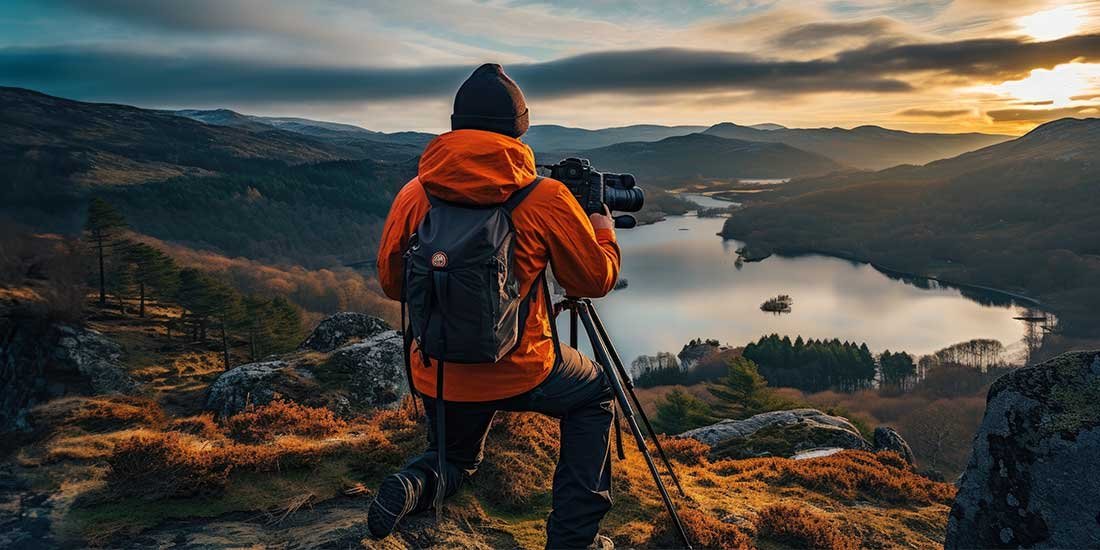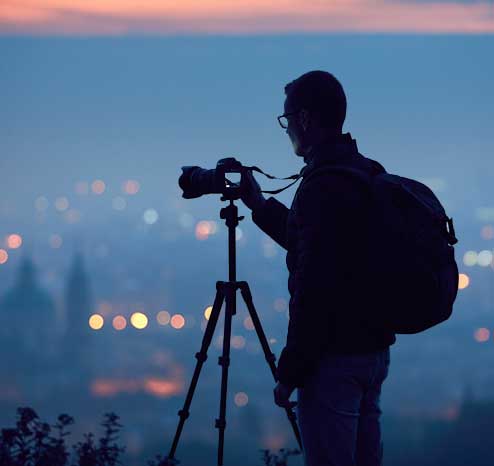Key Features To Look For In Camera Backpacks

Aesthetics may seem secondary, but style and design are important facets of a camera backpack. Choices range from minimalist and sleek designs to more rugged and utilitarian forms. The look of the backpack often reflects the photographer's personal taste and the shooting environment.
Beyond mere appearance, design elements can also bring about practical benefits. For instance, sleek models often emphasise lightweight materials and slim profiles, which are advantageous for urban photography. On the other hand, rugged designs may incorporate additional durability features suitable for harsh outdoor conditions.A good camera backpack is more than just a storage solution for photographers; it's an essential tool that aids in the workflow, equipment safety, and comfort during shoots.
The purpose of this article is to guide you through the critical features you should consider when selecting a camera backpack. Making an informed choice will not only protect your expensive gear but also enhance your shooting experience.
1. Durability
Durability is a paramount feature when it comes to selecting a camera backpack. Robust materials such as nylon and leather are commonly used in high-quality options. These materials resist wear and tear, ensuring a long lifespan for your investment.
Weather-resistant features are also essential, especially for photographers who shoot in various conditions. Waterproofing elements are common in durable camera backpacks. These features protect your sensitive equipment from rain, snow, and accidental spills. Making sure your backpack is weather-resistant can mean the difference between a successful shoot and a ruined one.
2. Size And Capacity
When selecting a camera backpack, dimensions and storage capabilities are integral factors. The scale of the bag directly influences the volume and variety of photography apparatus you can transport. A larger backpack offers ample space but may become cumbersome, while a compact version could limit the gear you can carry.
Equally important are the specialised pockets and sections designed for various photography tools. These distinct storage areas are engineered for items like lenses, tripods, and additional accessories. The presence of these compartments not only allows for better organisation but also provides enhanced protection for your gear.

3. Comfort
Comfort is a critical aspect often overlooked when choosing a camera backpack. Padded straps play a significant role in this regard. They help distribute weight evenly across your shoulders, reducing strain during prolonged use. The padding minimises discomfort, allowing you to focus more on your photography.
Back support and air circulation are also essential features to consider. Ergonomically designed backpacks often include lumbar support and ventilated back panels. These features reduce pressure on your back and allow for better airflow, making it easier to carry your gear for extended periods.
4. Accessibility
When you're engrossed in a photography session, ease of access to your equipment is crucial. Features such as rapid-entry pockets and lateral zippers simplify this process. These components allow you to retrieve lenses, memory cards, or other essentials without removing the entire backpack.
For photographers who are constantly moving, these attributes are indispensable. Quick-access options enable efficient gear changes, saving precious time during dynamic or time-sensitive shoots. The advantage of immediate access is not just convenience but also the opportunity to capture fleeting moments effectively.
5. Versatility
A feature that adds considerable value to camera backpacks is the inclusion of removable compartments. These detachable sections offer flexibility in how you store your equipment. They also allow you to convert the bag’s interior to meet specific needs for different shooting environments or types of photography.
The benefit of such versatility is the ability to adapt the backpack for various scenarios. Whether you are engaged in street photography, landscape shots at various backpacking destinations, or studio work, a versatile backpack can be configured to match your requirements. You can either maximise storage space or opt for a more minimal setup, depending on your needs.
6. Style And Design
Aesthetics may seem secondary, but style and design are important facets of a camera backpack. Choices range from minimalist and sleek designs to more rugged and utilitarian forms. The look of the backpack often reflects the photographer’s personal taste and the shooting environment.
Beyond mere appearance, design elements can also bring about practical benefits. For instance, sleek models often emphasise lightweight materials and slim profiles, which are advantageous for urban photography. On the other hand, rugged designs may incorporate additional durability features suitable for harsh outdoor conditions.
7. Extra Features
Beyond the fundamental features, some camera backpacks offer additional amenities that can be highly advantageous. For example, rain covers provide an extra layer of protection against unexpected weather changes. Hydration pockets can also be included, allowing you to carry water without compromising space for your equipment.
These supplemental features serve specific, practical needs. A rain cover can be a lifesaver during an outdoor shoot when the weather takes a sudden turn. Hydration pockets make it convenient to stay hydrated during long sessions, eliminating the need to carry additional bags or containers.
Final Thoughts
For your final decision, focus on a well-rounded combination of these key aspects. Prioritise features that align closely with your specific photography needs and workflow. By doing so, you can make an informed choice that not only safeguards your equipment but also enhances your overall photography experience.

The AW Editorial Team

